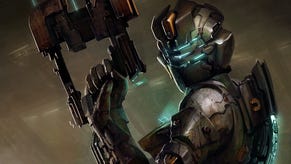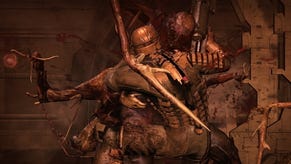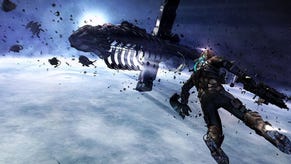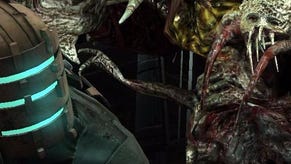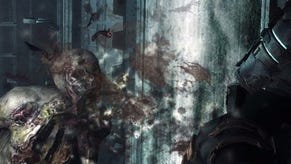Face-Off: Dead Space 2
Margin of terror.
Our usual i7 games unit was recently given a temporary downgrade from its usual NVIDIA GTX 480 graphics card in favour of the somewhat more pedestrian ASUS 9800GTX. It's an old card, limited to DirectX 10, and easily available for between £60 to £70 on eBay. Bearing in mind how much GPU tech has advanced recently, it was all too tempting to slot in a higher power card, but instead we thought we'd give Dead Space 2 a runout with this lower-end offering: its performance is pretty much on a par with what you might call an entry-level enthusiast's card.
The results were intriguing. At the very maximum settings at 720p with v-sync engaged, we saw performance that was pretty much exactly the same as on console, with a solid 30FPS. The 9800GTX doesn't have any DX11 capabilities of course, but that doesn't appear to be a problem as the Dead Space 2 renderer seems to be DX9 only.
Here's a comparison of how the game looks on these settings, up against both Xbox 360 and PlayStation 3. The console games are effectively identical and it's fair to say that the PC version follows suit.
The max settings PC experience looks uncannily similar to what we see on console at like-for-like resolutions, and while there may be some small additional quality in elements such as the shadows, the overall impression is that the settings in the PC game serve mostly to deduct detail to speed up performance on slower machines as opposed to providing a richer experience for those who have invested heavily in their gaming hardware.
Curiously, enabling v-sync does appear to limit frame-rate - what we saw with the 9800GTX was a pretty consistent 30FPS, with just the occasional, pretty much inconsequential dip. Endorsing this notion of a capped frame-rate (what seems to be an "if it doesn't run at 60, cap at 30" approach, if you will), we adjusted the settings to operate at full 1080p, retaining the maximum quality settings. There were a few more dips in the frame-rate, giving a consistency in the refresh that wasn't as solid as on console, but the experience was still eminently playable and the resolution bump can be quite a revelation at times.
A quick look at the settings reveals that the game is quite happy to run both 60Hz and even 120Hz if you should so wish, so the 9800GTX was dutifully ejected from the PC and replaced with a brand new, straight out of the box GTX 580 - the latest and greatest in the NVIDIA line. There were no problems here operating at the higher frame-rates and beating that 30FPS cap, but at the same time there was a curious lack of improvement in the way the game played: response didn't feel that much crisper and even the smoothness of the update wasn't quite as revelatory as one might hope.
However, while the boost in temporal resolution may seem a touch underwhelming, there is little doubt that the PC's ability to bust free of the consoles' 720p target resolution is a huge boon. While the majority of the art does seem best suited to 720p, textures and models still scale up relatively well to the higher resolution, and if anything, the boost in pixel count seems to make the use of lighting and shadow even more spectacular than it is on console. It's something that doesn't translate so well into basic comparison screenshots, but regardless, we've generated an upscaled 360 vs. PC native 1080p gallery.
At the higher resolution, there are still issues with aliasing, but the fact that "teh jaggies" are much smaller definitely helps the visual look of the game. It's curious that the advanced area of the PC version's settings does have an anti-aliasing option, but, similar to Medal of Honor, engaging it doesn't seem to make an enormous amount of difference (all of the shots in the comparison galleries are with AA apparently enabled).
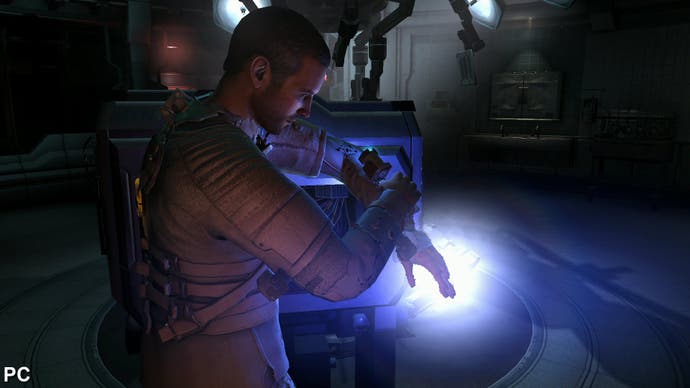
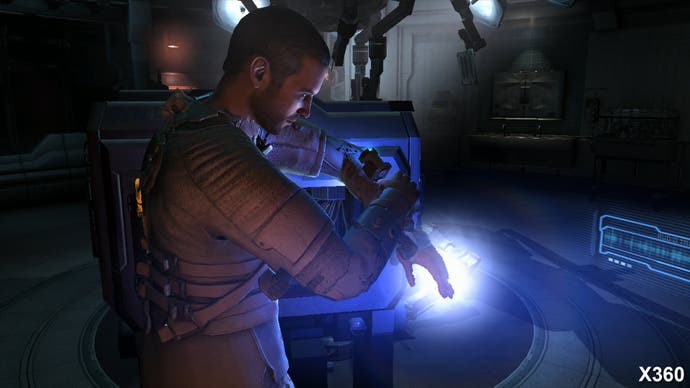
On the face of it, complaints about the PC version of the game are minimal. The Dead Space 2 experience is just as good as it is on console and that crucial ability to run at much higher resolutions does present a tangible and desirable bonus, a boon made even more attractive by the fact that you don't need a gargantuan graphics card to run it well at 1080p. Best of all, we don't need to wait three-to-six months for the game to actually appear as is the case with some cross-platform games.
On the minus side, PC owners will be missing out on DLC updates. We ran our copy of Dead Space 2 via Steam, and merely accessing the game from the library instantly brings up the bad news that download expansions to the PC version will be limited. It's an annoyance and somewhat difficult to justify: Visceral is clearly running with a development system geared towards making the same content run in the same way on all three platforms, so would the additional costs in integrating and QAing it really make it financially unviable? It seems unlikely.
It's a black mark in what is an otherwise flawless production. It's rare that a game aces our comparison tests with such consummate ease, but you can file Dead Space 2 alongside titles such as Need for Speed: Hot Pursuit in advancing the state-of-the-art while providing a completely like-for-like experience on both consoles. Indeed, Dead Space 2 inches ahead of the Criterion masterpiece owing to fewer differences noted in the PC version of the game.
More importantly, if the point hasn't been made strongly enough elsewhere - such as in Simon Parkin's 9/10 Eurogamer Dead Space 2 review - Visceral's latest is a simply sensational release, a masterpiece of design, and a beautiful example of how advances in rendering technology are translating directly into improving the gameplay experience.
It is without doubt an essential purchase on any of the three major platforms, but should you have a choice of gaming hardware, the PC version clearly offers the best-looking experience at higher resolutions - a state of affairs only marred by the notion that the full range of content isn't going to be available. This is clearly not a problem for the HD consoles and here we have two versions so close that there's almost nothing to differentiate the two.
Almost. While on paper the disc-swapping situation might play to the PS3's advantage, the fact is that a single, momentary pause in gameplay isn't going to upset anyone: it is a complete non-issue. More relevant is the audio. Dead Space 2 is a game that benefits hugely from playing with surround sound, and while the Xbox 360's Dolby Digital mix in the game is simply wonderful, the option to play with 5.1 and 7.1 uncompressed audio with PlayStation 3 is a factor that shouldn't be overlooked. And a freebie Move-enabled Dead Space: Extraction on top of that? Yes please...


